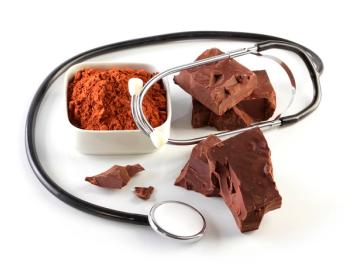
Looking back – and ahead – on the 30th anniversary of FDA approval for naltrexone as a treatment for alcohol use disorder
Medication-assisted treatment (MAT) is an effective treatment for AUD, but it remains underutilized by the medical community.
In 1994, the U.S. Food and Drug Administration (FDA) recognized
To begin to address the impact of AUD in the United States, there are many approved screening tools that health care professionals can use to help identify when a person’s relationship with alcohol may have become problematic. Recognition that AUD is a diagnosable medical condition can be helpful in reducing stigma, as can open conversation about MAT so people understand the various pathways to recovery that may best meet their individual needs.
The discovery years
My clinical experience with AUD began more than 40 years ago as a medical student at the University of Pennsylvania (UPenn). While on rounds, I met a soldier who had become dependent on alcohol following his return from Vietnam. He was struggling terribly during withdrawal. Witnessing his suffering was the wake-up call I needed to learn more about the disease.
As part of my dissertation for my doctorate at UPenn, I researched the biochemical underpinnings of alcohol addiction. I discovered that
Returning to UPenn in the mid-1980s for a psychiatry residency and a fellowship in neuropsychopharmacology, I initiated further studies on naltrexone for AUD – this time, among veterans. The results were promising: Veterans who were given naltrexone had much lower relapse rates than those who were given a placebo. This was the first empirical demonstration that naltrexone can help treat AUD and it led to a collaboration with researchers at Yale University involved in similar studies. We were able to present our findings to the FDA, which led to the approval of naltrexone to treat AUD in 1994, a decade after its 1984 approval for opioid dependence.
AUD exists on a spectrum
Until recently, those of us involved with treating AUD defined the severity of addiction in terms of its physical dependence, with cessation leading to withdrawal. But in more recent years, we've expanded the definition of AUD to recognize that alcohol dependence exists on a spectrum; individuals can experience mild, moderate, or severe symptoms.
Analyzing data on the unhealthy effects of alcohol, we saw that it's not only those with the most severe dependence who experience symptoms. Everyone’s relationship with alcohol is different, and there can be a slippery slope between drinking socially and what evolves into treatable dependence. Even following the onset of AUD, individuals’ symptoms may vary.
The criteria defining excessive drinking have also been updated. New guidelines from
Physicians can actively participate in determining whether a patient is experiencing any level of AUD by asking about their drinking habits, similar to inquiring about other lifestyle habits as a consistent component of a provider-patient relationship. They can ask questions such as, "How many drinks are you having weekly?" "Do you have trouble controlling how much you drink?" and “Are you experiencing any consequences from your drinking?” If the answer is “yes” to any of these, medication such as naltrexone may be something to consider prescribing. The medicine is safe and effective and it can reduce overall mortality, morbidity, and economic consequences.
How naltrexone works
Naltrexone works by blocking the receptors in the brain that register the feelings of reward and pleasure that many feel from alcohol consumption. As a consequence, many who use the medication anecdotally describe it as taking away their craving to drink. Naltrexone is available both as a daily pill and as a long-acting injectable called
There are also people who may not be ready to stop drinking altogether, but do want to moderate their drinking just like some people who don't want to eat too many carbohydrates, but are not interested in completely giving up bread and pasta, or those who want to exercise more, but aren't interested in becoming a track star. Our research has demonstrated that taking naltrexone before drinking can help some people limit their intake, avoiding the loss of control associated with excessive drinking.
For people living with AUD, the disease is not a personal failing and controlling their drinking is not about willpower. AUD is a chronic, biochemical issue in the brain and it is treatable. Naltrexone blocks the reward one would typically experience from alcohol, and for many also makes it easier to focus on tackling the related stressors or other mental health concerns that can commonly accompany AUD. Over time, people may be able to reframe their relationship with alcohol and begin a recovery journey committing to a life without drinking.
We can significantly reduce the personal and societal burdens of alcohol misuse by integrating naltrexone into patient care. Thoughtful and consistent intervention by health care professionals through appropriate screening can help identify trending behaviors possibly before they become AUD. At any point, however, equipping individuals with the right supports and treatments, including MAT in the form of naltrexone, can lay the foundations for sustained recovery.
Newsletter
Stay informed and empowered with Medical Economics enewsletter, delivering expert insights, financial strategies, practice management tips and technology trends — tailored for today’s physicians.














